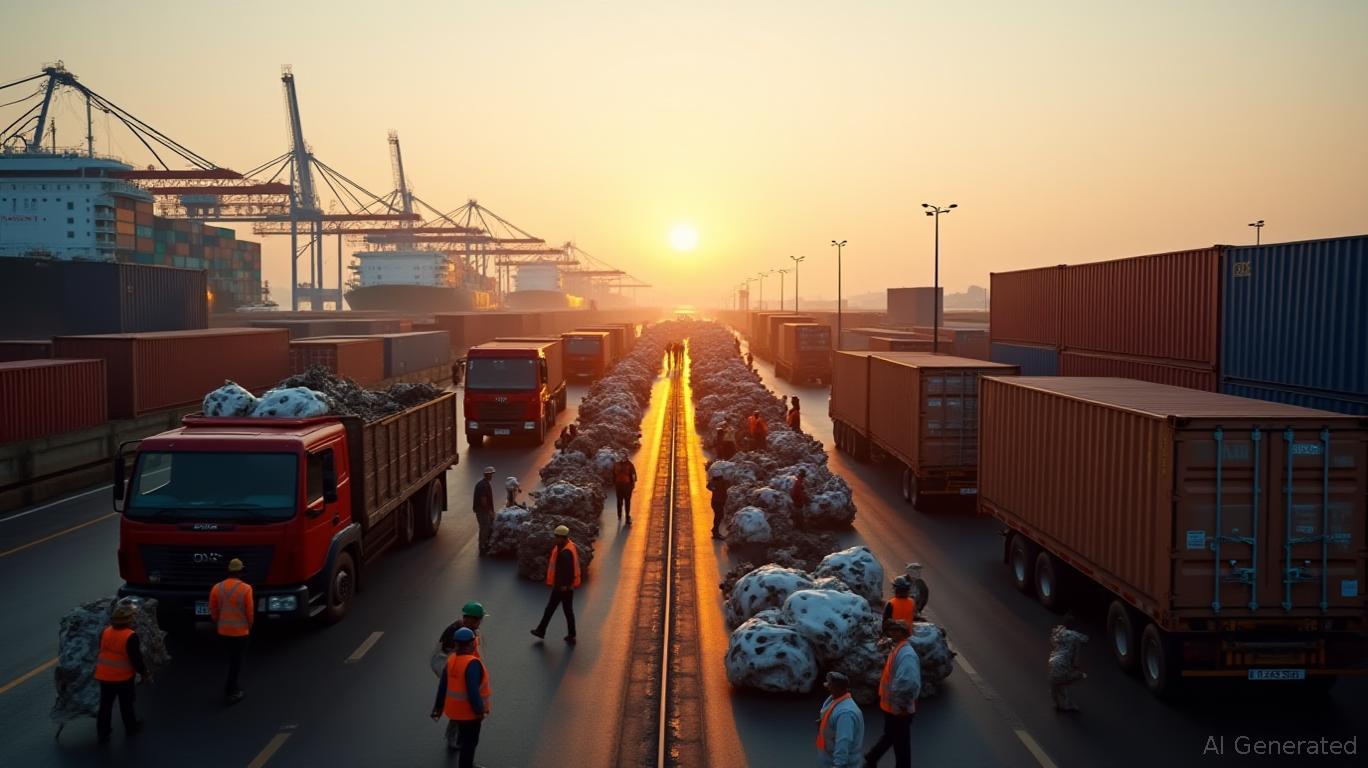Thailand's Export Surge Masks Tariff Tempest: Navigating Near-Term Risks for Long-Term Reward
Thailand's exports surged 18.4% year-on-year in May 2025, defying expectations and underscoring the resilience of its export-driven economy. Yet beneath the headline growth lies a precarious balancing act: the looming U.S. tariff threat, which could slash GDP by 1.5% if unresolved by the July 8 deadline, and sectoral divergences that demand careful investment scrutiny. This article argues that while the May surge is a bullish signal, investors should adopt a “wait for dip” strategy, focusing on tariff-resistant industries and companies poised to benefit from trade diversification.
The Export Surge: A Bullish Signal, but for Whom?
Thailand's May exports hit $25.625 billion, fueled by strong performances in three key sectors:
1. Automotive Parts: Up 14.2% year-on-year, driven by demand from ASEAN and Middle Eastern markets.
2. Electronics: Up 9.8% year-on-year, with semiconductors and printed circuit boards leading the charge.
3. Agriculture: Up 15% year-on-year, with rice and processed foods dominating.
The 18.4% growth rate far exceeded analysts' 6.7% forecast, reflecting Thailand's strategic advantages: its role as a regional manufacturing hub, trade agreements with the EU and ASEAN, and production efficiency gains from automation. However, the Commerce Ministry's optimism is tempered by risks tied to the U.S. tariff negotiations, which could disrupt 15% of Thailand's GDP.

The Tariff Threat: A Sword of Damocles
The U.S. currently imposes a 10% tariff on Thai exports under a temporary moratorium, but a 36% tariff looms if negotiations fail by July 8. This risk is not evenly distributed across sectors:
- Automotive Exports: 25% of Thailand's $45.6 billion U.S. trade surplus comes from
- Electronics: While semiconductors and tech components are less exposed to tariffs, their global supply chain integration means demand could shift if U.S. buyers seek alternatives.
The Commerce Ministry is negotiating aggressively to reduce the tariff to 10%, but the stakes are high. A worst-case scenario could slash 2025 export growth to just 1.6%, per the SCB Economic Intelligence Center.
Sectoral Resilience: Tech vs. Agro
Technology Sector: Tariff-Resistant, but Not Immune
- Semiconductors: Exports rose 16.5% year-on-year in April 2025, benefiting from Thailand's role in global supply chains. Companies like HANA Microelectronics (HANA.BK), a supplier to Apple and Samsung, are well-positioned due to diversified demand.
- Electric Vehicles (EVs): EV exports surged 175% year-on-year in early 2025, driven by Thailand's EV 3.5 scheme and Euro 6 emissions standards. Firms like Auto Alliance (AUTO.BK), which supplies EV batteries and components, are likely to outperform if tariffs are resolved.
Investment Takeaway: Tech stocks tied to global supply chains (e.g., semiconductors, EVs) offer long-term upside but face near-term volatility.
Agriculture Sector: Structural Strength, but Price Pressures
- Rice: Thailand remains the world's top exporter, with Hom Mali rice commanding premium prices. However, paddy prices have fallen below production costs, squeezing farmers.
- Rubber and Fruits: Rubber exports rose 36.2% year-on-year in early 2025, while durian and mango exports to China grew due to trade agreements.
Investment Takeaway: Agriculture's resilience is structural, but short-term risks include Indian rice "price dumping" and climate volatility. Firms like CP Group (CPALL), with integrated agro-logistics, offer stability.
H2 2025 Risks: Why Wait for Clarity?
Three risks could test Thailand's export momentum post-July:
1. Tariff Fallout: A 36% tariff could trigger a $7 billion annual loss, forcing companies to relocate production or seek non-U.S. markets.
2. Global Demand Slowdown: A manufacturing PMI contraction (April 2025: 49.5) signals weaker external demand.
3. Supply Chain Bottlenecks: U.S.-China trade tensions and energy cost inflation could disrupt logistics efficiency.
Investment Strategy: Target Tariff-Resistant Plays, Wait for Dip
- Tech Sector:
- Overweight: Semiconductor and EV supply chain stocks like HANA.BK (+16.5% YTD) and AUTO.BK (+30% YTD).
Underweight: Automotive parts firms exposed to U.S. tariffs until July clarity.
Agriculture Sector:
Hold: Companies with diversified markets (e.g., CP Group's cold-chain logistics) and premium products (rice, durian).
Timing:
- Wait until July 10: Avoid short-term volatility. If tariffs are resolved, expect a rebound in automotive and tech stocks.
- Look for dips in August-September: Post-tariff clarity, sectors like semiconductors could offer entry points at lower multiples.
Conclusion: Resilience, but Not Without Pain
Thailand's May export surge is a testament to its economic adaptability, but the tariff threat remains a critical overhang. Investors should prioritize companies with global diversification (e.g., semiconductors) or agro-sector stability (e.g., CP Group), while avoiding sectoral bets until post-July clarity. The long-term story of Thailand's export-driven economy remains intact—but navigating the next few months will require patience and precision.
Final Note: Keep an eye on the July 8 tariff deadline and Thailand's trade surplus data in August 2025. A widening surplus post-tariff clarity could signal renewed momentum.

Comments
No comments yet